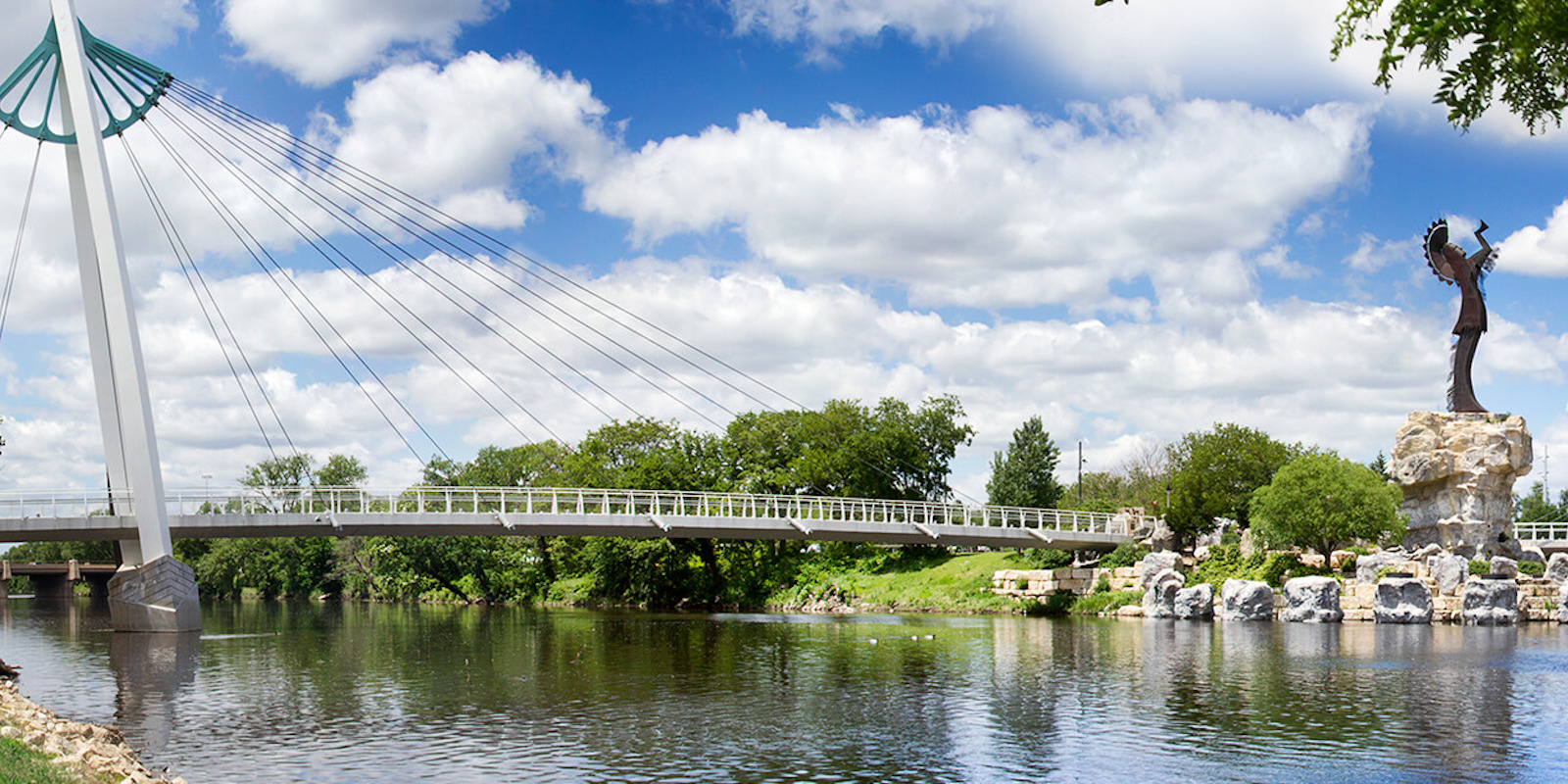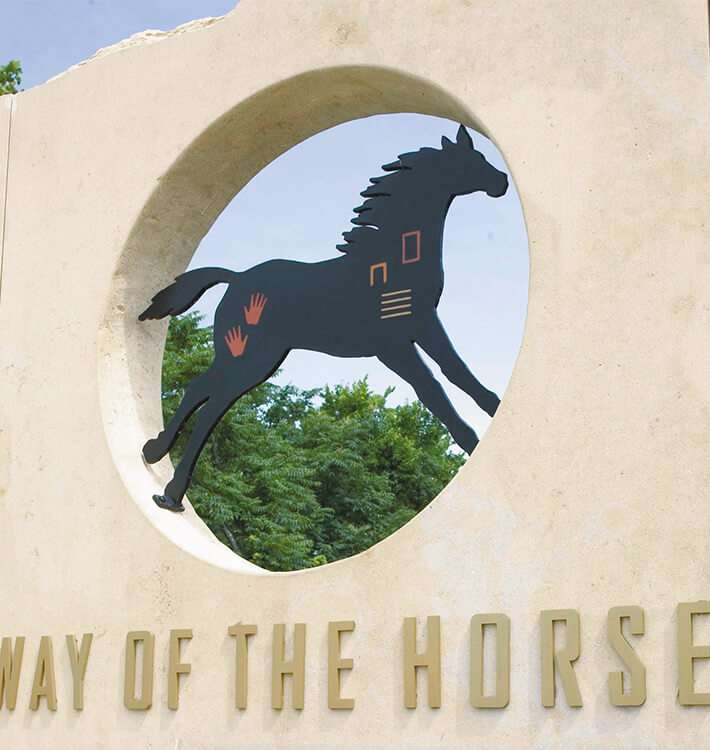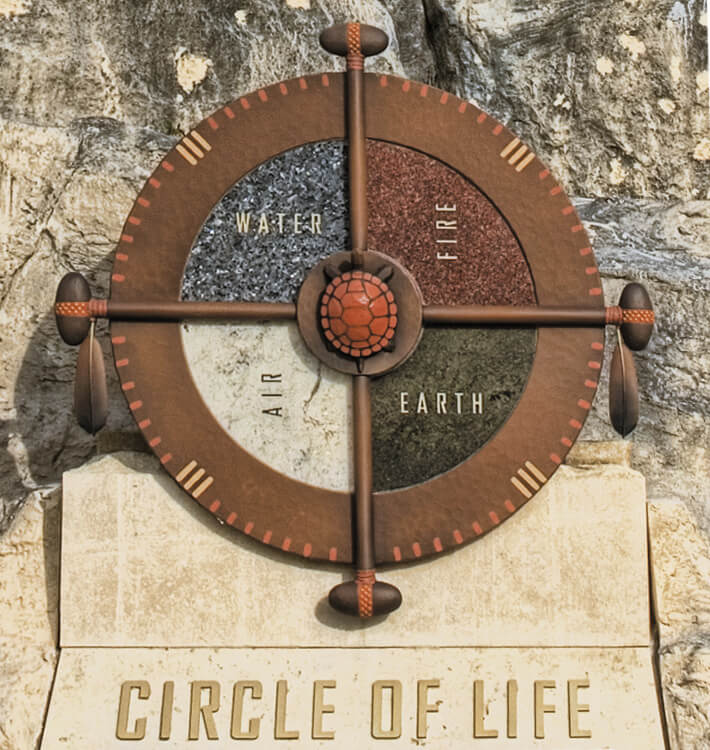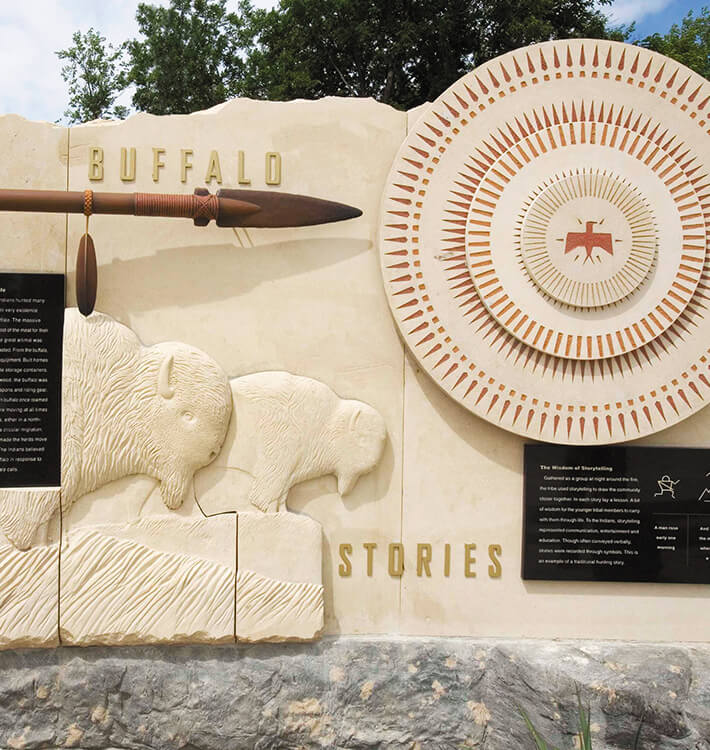Plains Indians’ Story Told in Steel and Stone
07.24.19 · Sonia Greteman
The Keeper of the Plains sculpture proudly stands at the confluence of the Big and Little Arkansas rivers, hands raised high in supplication. Since its installation in 1974, it has become a symbol for the city of Wichita and a tribute to the Native American tribes who continue to gather at this sacred headland. The Keeper also served as the focal point of an eight-year, $20 million restoration and river beautification project completed in May 2007. Our challenge: to accurately and visually communicate the rich legacy and daily lives of the nomadic Plains Indians and to do it in an authentic manner.
A Confluence of Cultures
The exhibit sits on sacred ground and immerses visitors in the lives, beliefs and practices of the nomadic Plains Indians. Follow wayfinding along serpentine paths or cross graceful bow-and-arrow-inspired, cable-stay walking bridges over the rivers to the Keeper of the Plains Plaza. The sounds of Native American drumming, flute and chants echo in the large flagstone plaza ringed by hand-chipped limestone walls and boulders. Upon entering the plaza, between sacred prayer poles, you are greeted with a 70-foot-long curved limestone wall.
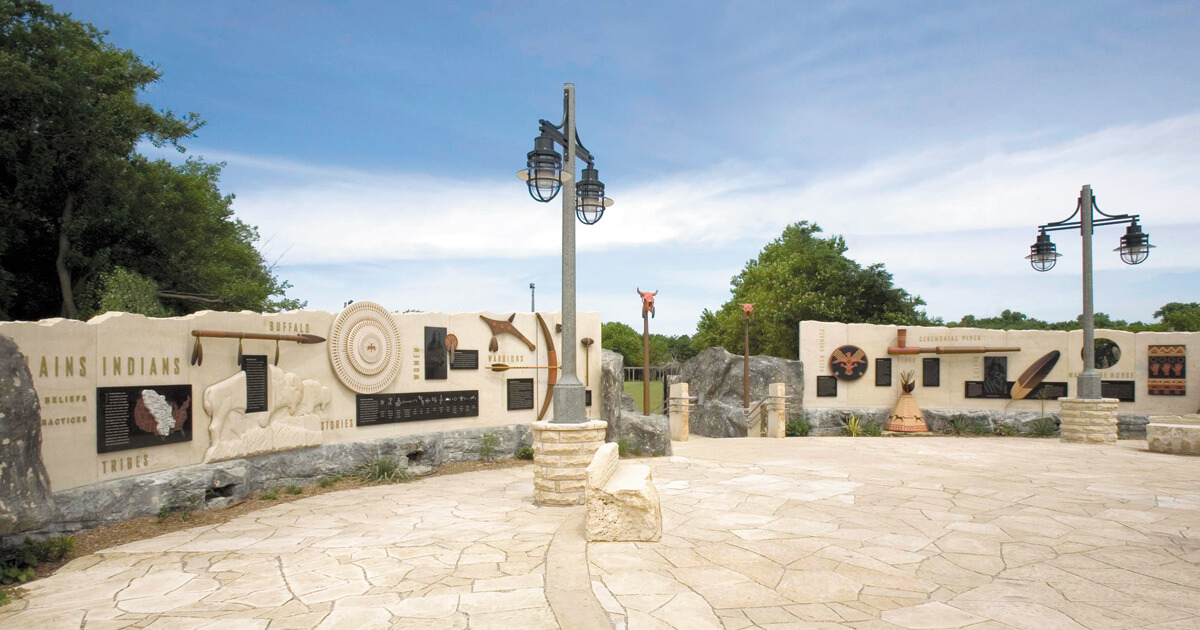
Elevating a Sculpture and Our Spirits
The Blackbear Bosin 44-foot Cor-Ten steel sculpture now stands elevated on a 30-foot rock promontory surrounded by quadrants representing the four elements: fire, air, water and earth. Gas-powered boulder firepots sit at the foot of the Keeper dramatically lighting the night. Native plantings of sage, bottlebrush, medicinal herbs, and prairie grasses spring up from the earth. The entire peninsula is surrounded by water, completing the circle of life.
Environmental Design Pays Homage
Meticulously designed environmental graphics attached to the massive limestone walls tell the story of the Indians’ lives, beliefs and practices. Details include a carved bison, a teepee with traditional Plains icons, and an animal-incrusted dream shield – all important to the culture. Photographs laser-etched into granite personalize the exhibit with the noble visages of the men and women who made history here. Metalwork and limestone sculptures crafted by Todd Whipple, Tom Schrauth and Chris Brunner showcase everything from workday tools and weapons to lodging and ornamentation. Eagles, horses and turtles – all significant to the culture – figure prominently. A map shows the migrations of the almost 30 tribes from the Dakotas down to Texas who were drawn to the rivers’ confluence for powwows and trading.
Wichita’s Must-Visit Tourist Site
The Keeper has long been the most visible and beloved of Wichita’s icons. Now it is also the most visited. This dynamic space has re-energized a previously neglected area, drawing thousands to one of the city’s most scenic spots, inviting visitors to contemplate and appreciate the rich heritage of the land and its people. Seeing the landscape, the families interacting with the installation and the grandeur of the finished project, we believe the Keeper’s creator, Blackbear Bosin, would have sent a prayer to Father Sky thanking him for the beauty of Mother Earth.
